Letters to My Younger Sisters
Raquel Gutiérrez Aguilar
Introduction
Letters to my Younger Sisters is Raquel Gutiérrez Aguilar’s effort to transmit to us, her younger sisters, the lessons she has learned about recognizing and pushing back against the patriarchal pact. The Letters are an effort at intergenerational knowledge transmission: writing in the first person and drawing on her own life experiences, they are the outcome of four decades of reflection on militant organizing, including five years of incarceration.
In the summer of 2022, I sat down with Raquel to think through how best to approach the writing of an introduction to the English translation of the first letter. While her work and trajectory are familiar to many on the left in Mexico and Latin America, and although some of her writing has already begun to appear in English, it nevertheless feels vital to introduce her to readers unfamiliar with her story.
In her early twenties, Raquel left Mexico to join the armed resistance in El Salvador. “The political horizon at that time appeared very well defined and clear, and it was centered on taking state power,” she told me in an interview at her home in Puebla, Mexico. Far from the autonomous collectives and horizontal organizations that became the norm for later generations of activists, in 1980 Central American guerrilla struggles were highly structured and compartmentalized in order to avoid repression and minimize its impacts. “The whole organizational structure was based on channeling our personal capacities into actions that we alone did not decide, according to the mechanics of democratic centralism,” Gutiérrez said. “And all of our activity took place within the logic of war.”
The life force of militants was infused into armed struggle through the establishment of rigid structures that were also highly patriarchal. “I’ve never been someone who is docile; I’m not aggressive, but I question everything,” said Gutiérrez. One of the big questions that emerged out of her experiences in El Salvador was: “How is it possible to feel so much oppression inside an organization you are helping build in order to be free, and to fight against exploitation and domination?”
Gutiérrez was 21 years old when she was captured and imprisoned in San Salvador in January, 1984, before being deported to Mexico. She knew that she would continue to dedicate her life to struggles for freedom; but she also knew that integrating into a pre-existing, highly structured political-military organization was not for her. Although this knowledge was something she struggled to articulate at the time, she now refers to it as “intuitive knowledge,” “knowing our feelings and sensations,” or “knowing with [our] guts.” She knew, deep down, that she didn’t want to return to the trenches in the same way.
In the fall of the same year, Gutiérrez would travel to Bolivia, where she spent seven years as a clandestine militant in armed struggle, this time with the Ejército Guerrillero Tupak Katari (Tupak Katari Guerrilla Army‚ EGTK). This time, “we founded our own organization, and we started to experiment with anti-authoritarian forms of organizing and struggle,” she said. “We worked on the co-production of decision making: those who carried out actions decided on their character, place, and time together. In that way we broke with a military style command.” Once an action was underway a vertical command structure would temporarily be instated, which would then dissolve back into horizontal structures afterwards.
In April of 1992 she was arrested, and together with 11 comrades, spent five years in the Centro de Orientación Femenina, the women’s prison in La Paz, Bolivia. “That experience completely changed my life, because I began to understand other ways of being, of being together with compañeras,” she said. “I don’t want to romanticize being in prison, at all, but there were good moments in jail.” As a political prisoner, she said, she was protected by prisoners in the general population, who even rioted when officials attempted to put her in isolation. Later, she herself participated in a prison riot when another political prisoner was similarly threatened. “It was incredible to feel how so much power could be produced by and among us.”
Her first book, ¡A desordenar! was written and published while she was in prison. Then, in 1997, Gutiérrez and her comrades were released without ever having been sentenced. Although they didn’t return to armed struggle, they continued organizing, and began producing theoretical work in the new political context of hard-edged neoliberalism. At this time, Gutiérrez continued to consider herself a leftist, anti-authoritarian militant; however, the goal of taking state power was long behind her — “that’s only going to lead us to hell,” she told me.
In 2000, Cochabamba exploded in resistance as locals began to collectively organize in defense of their right to water in the face of attempted privatization of the city’s hydraulic system. During these struggles, Gutiérrez began to understand some of the actions taken by her male comrades as a form of “patriarchal discipline” which sought to control how she and other women used their voices. “The men began to signify a woman speaking as violent, they had a lot of difficulty recognizing our authority and our voice,” she said.
Her second book, Desandar el Laberinto, published in 1999, attempts to describe what she calls the “marriage-family trap,” while formulating ways to escape its grasp. She took the decision to leave Bolivia by following her gut, heeding the “feelings and sensations” produced by her body. It was an escape from what she now calls the “patriarchal pact,” and from the weakness that it imposes upon us, though she wasn’t using that language at that time. Never again would she be drawn into another marriage-like relationship with a man, or “work with men as equal partners.”
In 2001, Gutiérrez returned to Mexico, touching down in her homeland at a moment in which social struggle was extremely vibrant and inspiring due in large part to the persistence of the Zapatista uprising seven years prior. Throughout the early aughts, Gutiérrez would participate, work alongside, and document Indigenous struggles taking place in parallel with the Zapatista movement, producing a series of books chronicling these efforts. In 2007, she began devoting energy to building autonomous social spaces, one of which — La Casa de Ondas — is now a bookstore called La Volcana in Mexico City’s Santa María de la Ribera neighborhood.
“I was doing what I now call building anti-patriarchal networks for the common, which have a kind of reciprocity at their heart,” she said. “This continues to be the essence of my political work.” She also returned to the university, completing a doctoral degree at the Autonomous University of Puebla before becoming a professor in sociology at the same institution shortly thereafter. It was at this time that she published Rhythms of the Pachakuti, a study of the Bolivian Water Wars.
“The experience of working on a day-to-day basis in mixed spaces in academia demonstrated to me, yet again, the patriarchal pact, and the sense of powerlessness that it provokes,” Gutiérrez said. She was seeing the same pact on display in her workplace, yet this time she was sufficiently distant to be in a position to analyze it, as opposed to her previous experiences in which the patriarchal pact was contextually bound up in intimate relationships and deep personal bonds with her male comrades.
It was in these conditions, now in her 50s, that Gutiérrez experienced an aha! moment that allowed her to understand the patriarchal pact, which led her to develop new strategies to avoid, escape and overcome it. It was around the same period that she initiated a friendship with Italian-American feminist scholar Silvia Federici.
The feminist social uprising exploded in Argentina in 2016, and has since shifted the terms of activism and politics in countries throughout the hemisphere. Participating in that struggle, now as an elder, is now at the center of Gutiérrez’s life. “It was around this time that I allowed myself to fully and completely reconcile with feminism; it provided me with decisive analytical tools, and I began to see how fertile it is to identify myself therein.”
“I’m a woman with 40 years of experience in struggle,” said Gutiérrez as we wound down our conversation. “I’m a woman without the same strength I once had, but I can see the strength of the young women who are mobilizing, and so I asked myself, what would have been useful to me to have known in order to make decisions related to my vital energy, my life force, back then?” It is our hope that this translation into English will help these reflections reach even more young people who are struggling against oppression, capitalism, colonialism and the patriarchal pact.
—Dawn Marie Paley, Oaxaca, January 2023.
Prologue: Why write these letters?
I write these letters out of a commitment to deepening, intensifying, and extending the moment of feminist rebellion that has burst forth in Latin America. This rebellion is built out of struggle and street occupations; out of analysis, but also out of an understanding of our most intimate pain; out of political deliberation, and the creation of all manner of relationships and connections for sustaining life; out of a multifaceted politicization of the most difficult moments in everyday life; out of scholarly and intellectual debates; and, of course, out of shared pleasure and surprise. Through my words, I also wish to strengthen the resistance to the growing international threat of fascism.
For many years now, I have been primarily devoted to pedagogy and learning. I recognize the fecundity of my current position as a professor when I see how, in dialogue and fellowship with one another, my beloved younger compañeras flourish and affirm themselves. My continual discussions with them have nourished and enriched me, and it is this trust that allows us to go beyond established forms of relationship and overflow them. Knowledge flows in and out, from all sides. We learn; we learn together, and become sources of strength for one another.
The practice of relationships does not dissolve the differences between and among women and feminized subjects, but it can regulate and balance them. It ensures that such bonds do not immediately become hierarchical and unequal, even if they remain, at times, conflictual. I’ve also learned that when it comes to knowledge of the world, there are often blockages and transmission can be difficult. Such worldly knowledge includes practical wisdom, but also sensible or intuitive knowledge, as well as that which is formally expressed through reason. This is why I decided to write this series of letters to my younger sisters: I have faith that some of the knowledge expressed in these letters will help nourish the efforts and struggles in which my readers are engaged.
This is the first of four letters I plan to write. It departs from the most difficult problem that I have confronted in my (already rather lengthy) efforts to assemble anti-patriarchal weavings for the commons. I choose this wording because I’ve spent almost forty years in the struggle, yet I came to feminism only late. At times, I struggle to describe myself. I strive to be part of the multitude of anti-patriarchal weavings for the commons that are currently demonstrating their capacities across highly variegated geographies; this is how I would summarize the desire that has motivated me throughout my life.
The epistolary genre has proven a fertile tool by which to sustain my own voice. I am uninterested in establishing truths! I wish to share and reflect upon my lived experience, to expand our personal and collective capacities. This letter explores the most difficult problem I have encountered, one which it took me a long time to understand and process with my whole body. It is a problem that has hindered my ability to direct my vital energies toward creating and participating in anti-patriarchal weavings for the commons. Those weavings, from my perspective, are the basis of the possibility of subverting and overturning the world as it is currently structured. They are the foundation of self-defense and creation, of the conservation and expansion of what has been created, of transformation and the capacity for struggle.
I have sifted and arranged my experiences here in the hopes that they will be useful to younger sisters, who, through the rich constellation of feminism that is being elaborated and enacted today, are focusing their energy on dismantling a patriarchal order that assembles hierarchies and colonial and capitalist inequalities.
First Letter: The patriarchal pact
Puebla, México, February 13, 2020.
Dear compañeras, sisters, friends:
In this first letter, I wish to explore the problem that has been most difficult for me to understand, which I mean to fully and completely understand, to understand so as to articulate how the world that I seek to subvert functions and is structured. Perhaps other compañeras are already familiar with these ideas and will be surprised to hear me say that they form the central obstacle that my political efforts have come up against. I ask for your patience. It’s my hope that the account offered here will contribute specific situated strands of truth that deepen our understanding of the hugely draining tangle of overlapping hierarchizing apparatuses we’re trying to dismantle through collective struggle.
My most difficult challenge has been to understand, with my whole body, that spaces of equality do not exist. It is a matter of understanding that the social world — organized as it is around market relations and expanded processes of capital accumulation with heteronormative and colonial roots, and draped in multiple forms of technocratic administration and state control designed to constantly siphon our collective and individual strength, along with the vast material wealth that sustains human and non-human life — is structured by a rigid and persistent low hierarchy in which the masculine is dominant, and which expresses itself through repeated practices of expropriation, tutelage, and control that are imposed through violence. The immense fabric of interdependence — once it is assembled hierarchically1 — is inhabited by human beings with women’s bodies, human beings with feminized and dissident bodies, as well as human beings with masculine bodies.
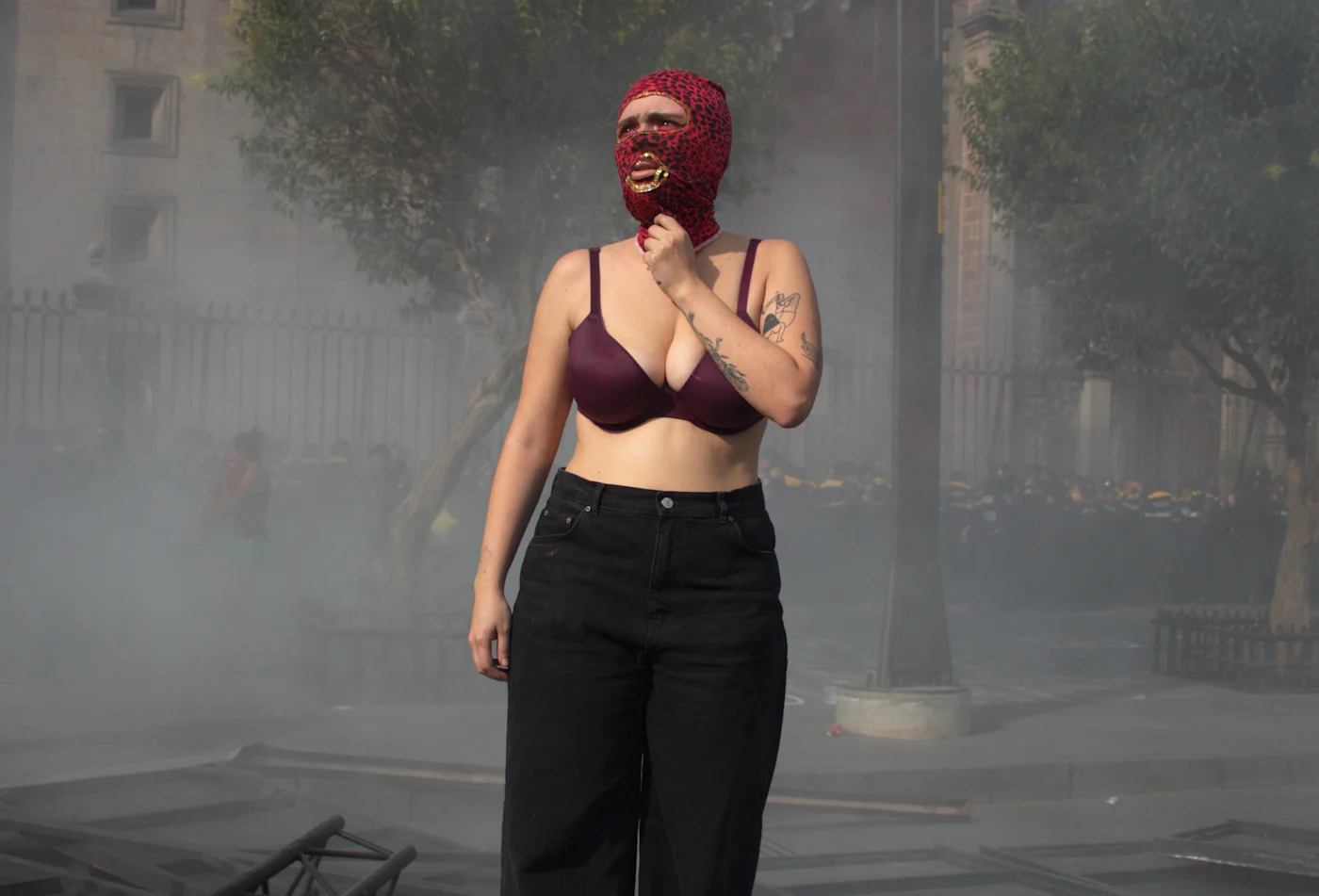
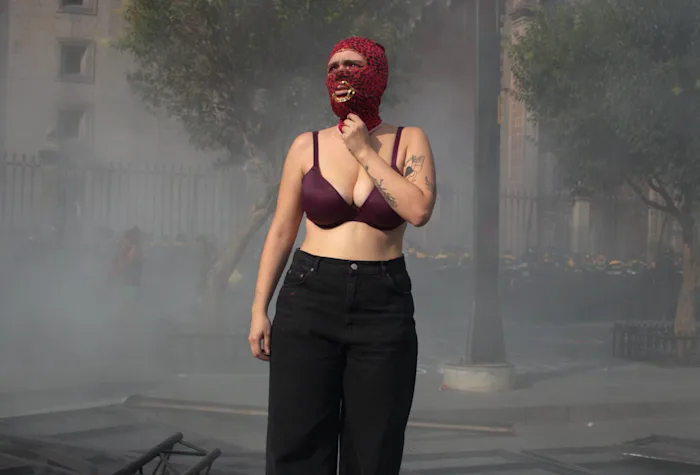
Spaces of equality do not exist. They do not exist and we must create them, which presents an enormous, twofold problem. The double nature of the problem can be approached through the following division: on the one hand, there are not spaces of equality between men and women and other feminized bodies; yet neither are there spaces of equality among women and feminized bodies. We know that we are different and diverse. We inhabit a fragmented society, torn apart by hierarchized differences that fix each of us in a specific site of the social geography that structures, enables, and limits our possibilities to act.
We inhabit this arbitrary and unjust dynamic assemblage, and it is here that we sustain our collective and individual existence, through the connections that we are able to generate and cultivate among us, nosotras.2 As we do so, we are simultaneously assembled in the patriarchal-capitalist heteronormative structure, itself inherited from colonialism. Even so, we re-create connections that, although limited by this structure, time and again overflow the assemblage that awaits us. Aside from the most immediate connections we cultivate in support of our immediate collective and individual existence, beyond the predetermined assemblage, in certain moments we are also able to connect among very different people, beyond an immediate scale, and even manage to expand those connections.
For me, this is the main problem we face. In the middle of this, we participate in struggles that have multiple flanks. Understanding this amalgamated set of difficulties in practical terms is immensely complicated. Below I present the lessons I have gleaned on the subject, insofar as I have been able to rebuild bonds and (re)connect with others, even while confronting major difficulties.
The ubiquitous nature of the patriarchal order
Every space that claims to be one of equality is, in its most intimate constitution, structured through an established and often naturalized masculine-patriarchal hierarchy. This identifies and separates those who inhabit male bodies from those of us who inhabit women’s or feminized bodies, while ignoring and denying any other possibility. Among those who are recognized as men, various immediate and recurring “patriarchal pacts” of domination/expropriation are established that order both specifically masculine spaces and so-called “mixed” spaces.
This is the patriarchal pact, and it is made up of at least two elements. On the one hand, it enables the formation of a bloc against women, against all women in general and more emphatically against certain women, the most autonomous, those with the most strength. Additionally, the patriarchal pact is an effective mechanism for setting the criteria of “admissibility” that allow certain women into mixed spaces, and their instantaneous classification hierarchically according to the pact’s implicit agreements, which are as arbitrary as they are general. The patriarchal pact is constitutive of a bloc as systematic as it is unpredictable, sometimes implicit and subtle, while at other times visible and explicit, even glaring.
This is part of the problem as, on the other hand, the patriarchal pact is also the unstable and well-established terrain on which all types of conflicts occur between “them,” that is, between human beings with male bodies, who aspire to mediate the world through the given order of things, and those of us with feminine or feminized bodies. Inside this pact there is a war zone, in which we necessarily find ourselves installed. Our struggles unfold from there, and thus we must be careful with our analysis. Let’s go step by step.
The patriarchal pact, in its most intimate dimension, is always deployed through aggression against women, against all of those [todxs aquellxs] who occupy the place of nosotras, against ourselves and our creations. The patriarchal pact enables the continued expropriation of our powers and creations. It is regenerated and expands by systematically draining our energy and creative capacity, contributing to the durability and plasticity of its presence. As long as we do not stop the drainage of our own energy, we constantly feed the monster with our own life and creations. Placing a limit on this draining of our energy is immensely difficult and frightening.
Within the patriarchal pact is a strict hierarchical order that structures — and is structured by — relationships among men themselves and with women and others who accept what they can get from within the pact. Based on this hierarchical, rigid, and stable structure, the patriarchal pact has been interwoven throughout history with brutal colonial domination and, of course, with capitalism. That is how it has increasingly expanded over the planet’s extensive geographies and over life as a whole. Women and feminized bodies — in their boundless diversity — inhabit territories under the patriarchal pact. Each of us is different from the other(s), each of us is separated from the other(s) by recurrent patriarchal mediations that deny our autonomy and our capacity to connect. We are exposed to the systematic siphoning of our energy and resources. On many occasions, this is for me the heart of the problem.
As we challenge the patriarchal pact, we need to understand it as a whole, in its immenseness, ubiquity, and depth. As Luisa Muraro reminds us, breaking out of the patriarchal pact is a matter of “breaking the mechanism of repetition” through which life is presented to us as the reiteration of familiar episodes with only a few variables. The patriarchal pact lies at the core of the radical negation of the feminine and the feminized, and it is structured around a rabid and systematic attack on our bodies, our autonomy, our creations, and our authority. This aggression is exercised through an infinite number of violences, some of which are subtle and ambiguous, while others are explicit and brutal. It manifests, again and again, in changing and sudden ways, making it difficult to recognize as part of a broader process, as a specific instance of the same dynamic. Recognizing the polymorphic exercise of this aggression as the product of a logic structured against us and our power does not happen immediately. Patriarchal logic — which depends on a violent negation of our bodies, forces, and desires in almost every single moment — is often well hidden.
It is worth making a clarification here. Identifying the patriarchal pact, and the material, political, and symbolic order that is built from it as the central problem does not mean ignoring the immense conflicts that structure colonial hierarchies, nor the brutal, exploitative, dispossessive, and predatory capitalist structure of our society. Rather, we wish to highlight a nonnegotiable point of departure for the analysis and comprehension of our own actions as women in struggle. The patriarchal pact that dynamically organizes the everyday devastation of individual and collective life is not, as some have argued, a secondary contradiction that must, at times, be ignored. Ignoring it means, at some level, aligning with the iterative mechanisms of the domination-expropriation dynamic as a whole. Recognizing the patriarchal pact, its ubiquity, its many faces and ways of reappearing in order to challenge it in all its versions and variants — through the strength of being “among women” [entre mujeres], but also, at times, among men who seek to “desert” the pact — is the most fundamental aspect of the challenge that faces us today. It is also one of the most difficult issues to understand, since the general dynamic of domination-expropriation that organizes everyday life — and keeps us powerless — continuously thrusts us into situations in which we are asked to set such a perspective aside, in which our only choice is between one form of patriarchal alliance or another. I will discuss this in depth below, as well as in subsequent letters.
Exploring the patriarchal pact so as to better recognize it
Let’s explore, step-by-step, how the patriarchal pact is expressed and reproduced. The radical negation of our autonomy is visible in the patriarchal desire to control and restrict our bodies, in the insolent devaluation of our voices, in the disregard of our contributions to joint tasks, in the immense violence with which all of this occurs. This negation, reiterated time and again in the private sphere, then extends outward into the public sphere through the inhibition of the disposition of self [la disposición de sí] present in every singular woman, which forms the necessary condition allowing us to “step out beyond ourselves” and connect with others. This disposition is what allows us to construct a malleable and complex measure of oneself, which we need in order to regulate and renew our bonds with others. This complicity and connection “among women,” which tends to generate its own regulatory mediation, forms the precondition for an exercise of our own strength and capacity rooted in an awareness of the network of interdependence that we inhabit. We have seen this recently in the rekindled struggles of hundreds of thousands of women across the continent. Wherever it is initiated, this “being-among-women” tends almost immediately to place the patriarchal pact in crisis in a specific and situated way. This is true not only at the level of “mixed spaces” and naturalized familial practices, but also at the level of the individual person, whether male, female, or any other gender. That is why it is so difficult to imagine producing any kind of stabilization out of this “between women.” Its potency also explains why it is so ferociously attacked.
The systematic and often violent denial of our bodies, our creations, and our authority — which is how the patriarchal pact manifests itself — hinders and obstructs the unfolding of our desires, by inhibiting our capacity to care for our bonds and generate connections, weakening it and making us doubt it. Hence the familiar sensation of a permanent draining of our energy that occurs when we attempt to circulate in its midst blindly, following only our sensible intuition. We have waged countless struggles within the ambit of this pact, attempting with great effort to escape our material and symbolic exploitation, as well as the abnegation, sacrifice, complacency, and silence socially imposed on us. However, it is difficult to grasp the ubiquity with which the worst manifestations of the pact occur, their stubborn reappearance, sometimes amplified to incredible levels, at other times subtle like drops of water that slowly erode stone. This is why, when reflecting on my own experiences, I insist that the central problem we face in seeking to dismantle this war upon us and create a feminist politics for the commons lies in producing between women stable and sustainable bonds that consistently challenge, critique, elude, and dissolve the patriarchal pact and its disastrous legacy. That is the trajectory I am referring to as “being among women” and, I believe, the key to the radicality of the anti-patriarchal struggle currently underway.
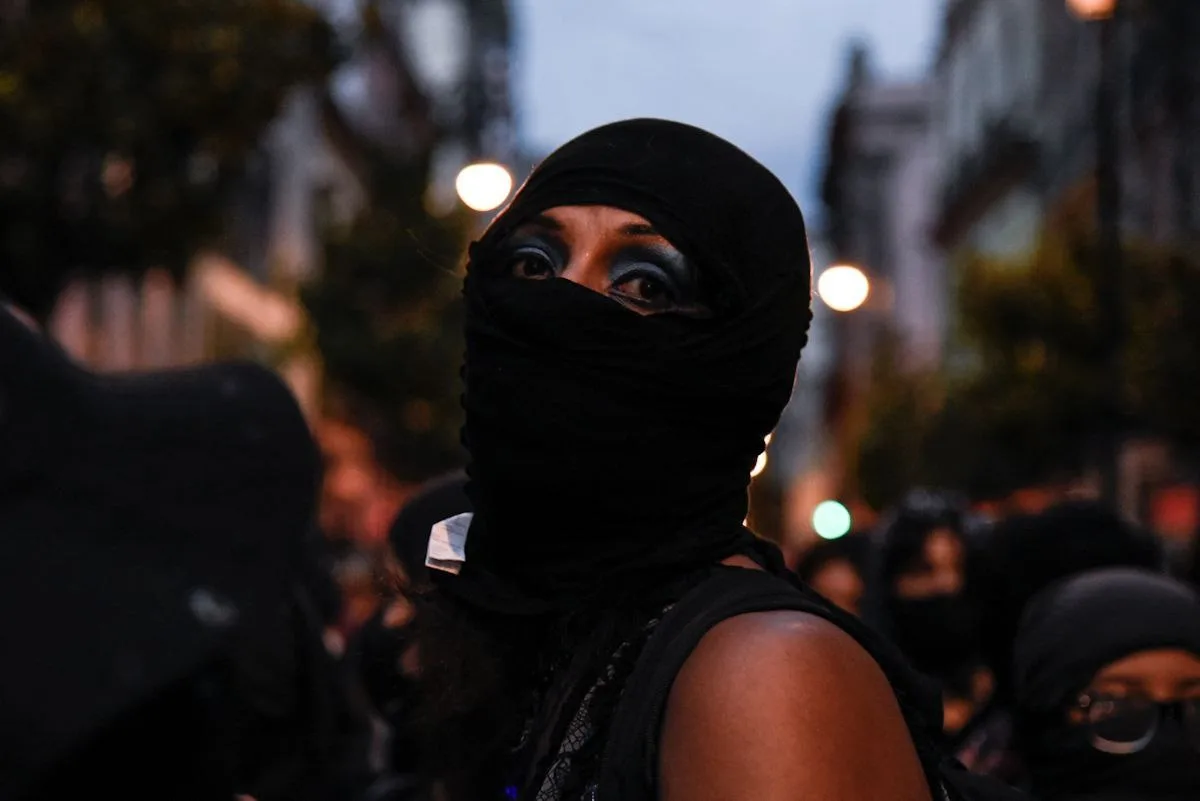
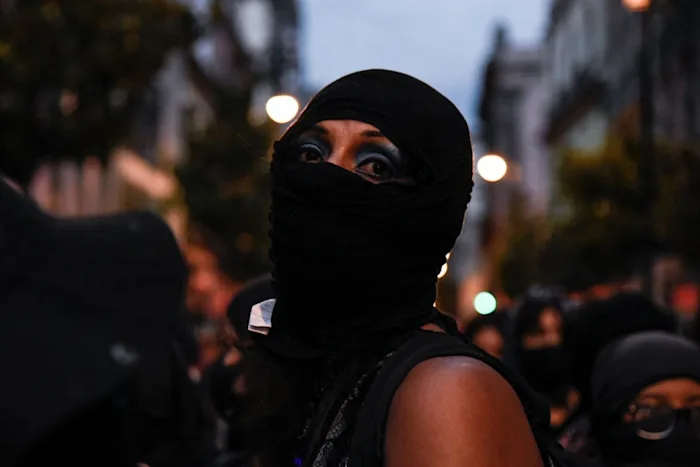
In developing this argument, I draw on the writing of two relevant European thinkers: Luisa Muraro and Almudena Hernando. Muraro has explored in depth the denial and disregard of maternal authority by the patriarchal pact, which constitutes the source of feminine authority par excellence, in her view. On the other hand, Hernando has explored the radical patriarchal denial of the interdependence essential to sustaining human life in its material, emotional, and symbolic dimensions. Only by first rendering this fabric of attachments invisible could we ever entertain that fetishized image of an “independent man,” solitary and self-sufficient.
As Muraro explains, if the immense maternal authority — which, symbolically, is also the authority of the living Earth that we inhabit, of the Nature that we are — has been denied and disregarded since the so-called “beginning of history” (i.e., humanity’s written past), then not only was it necessary for certain cultures to establish an omnipotent Father as the sole creator of life; it was also essential to forge an alliance between those “similar” to this symbolic Father: humans with male bodies. Such an alliance is always hierarchical and violent, as evidenced by Western mythological and religious history as well as the everyday life in which our singular experience plays out.
The pact among men — which has been extended over the last century to include some women — is so generalized and so naturalized that it is not surprising that it is often very difficult to perceive. I believe that the patriarchal pact remains the most intimate structural framework of contemporary social life, which tethers private and public life together all the while insisting that these two spheres of our single life are separate, distinct, and foreign to one another. Capitalism and colonialism are nourished and interwoven by this same framework. It is as if the patriarchal pact, like a historical palimpsest of a diffuse figure that appears to have been erased although it reminds hidden beneath all that is written and produced these days, contains a powerful reality: the unprecedented capacity to push social relations to conform to its archaic, apparently nonexistent traces, to unfold according to their archaic design. This is what I wish to analyze: the forgotten or not immediately recognized or recognizable lines of hierarchization and expropriation that trap us, time and again, in a repetitive loop: the repetition of the patriarchal order, and therefore of colonial capitalism. I propose that we sketch a diagram by which to understand the mechanism of repetition, a mechanism that today’s renewed feminist struggle must destroy in order to make way for creativity and abundance.
Since the onset of capitalist modernity social life has been organized into two spheres that are presented as separate and distinct: the private and the public. At a practical level, the private sphere is organized around twin apparatuses: marriage and the family (I have developed a critique of both inanother work). But it is the difficulties of sustaining our struggles in the public sphere that is at the heart of my current concerns. It must be recalled that public space has historically been organized directly on the basis of the patriarchal pact through the subjugation/negation of the work of reproducing life, and on the radical exploitation and dispossession of women. The central axis of the stability and durability of the patriarchal pact is inheritance: the differentiated and hierarchizing determination of who succeeds who and what each new body is entitled to, what is differentiated and valued by virtue of it. In this respect, a fundamental pillar of the pact’s continuity. The matter of material and symbolic inheritance is crucial because in many cultures — even if contemporary modernity claims to have formally remedied this — each person is fixed in a differentiated way along a structured chain of lineage according to the sex and gender that they bear. Each person’s relationship with the specific set of material and/or symbolic resources available is marked by its origin, something that becomes evident in tracing the extreme rupture of the trans-Atlantic slave trade. Therefore, it is through material and symbolic inheritance that the racialized material hierarchization between men and women is reiterated and repeated, again and again.
On the other hand, as noted already, the second element of the patriarchal pact — which is, in some ways a complementary feature of the ubiquitous aggression against women, our bodies, energy, and creations — consists of the warlike internal hierarchy among members of the pact in order to determine who will occupy the symbolic place of the “father,” the “alpha male,” the “chief” or “boss.” The tense rivalry between members of the patriarchal pact, which transforms it into a structure that is either highly unstable or rigidly vertical and authoritarian, pushes its members to repeatedly elaborate ritualized and unmovable hierarchies that guarantee the durability of their bonds and prevent reciprocal death. The threat of (internal) war, a permanent danger within the pact, is typically exorcized through external war. The patriarchal pact and the logic of war are, as far as I am concerned, two sides of the same coin.
Today’s social world is organized around a tangle of patriarchal pacts, some material and immediate, others symbolic and large-scale, which often stand in tension with one another. This social world was grafted from modernity, which itself emerged from the colonization of the Americas. It is a world organized through multiple overlapping processes of separation and enclosure of the means of existence, as well as the continual expropriation of our vital force that ensures the negation of our political capacities. All of this is necessary to sustain the primitive and expanded accumulation of capital. This hierarchical skein of relations configures a social world in which the relations of interdependence that guarantee the sustainability of life are disregarded again and again, making it so that those relations — which persist despite their being repeatedly denied — become tense, unsatisfactory, abusive, and prone to violence. This leads to competition and rivalry among members of the patriarchal pact, who must establish hierarchical institutions to stabilize and ritualize their rivalry, while smoothing out its most destructive edges (as Hobbes describes in his Leviathan). Yet, prior to the introduction of such rigidity, which limits competition among its members, there is a patriarchal pact against all women and, in general, against todxs nosotrxs, against everything that is perceived as different from themselves. The patriarchal regime that organizes the predominance of the masculine-dominant is, undoubtedly, a historical tragedy.
I will not, at least for the moment, delve into the debate over the origins of the patriarchal pact. Several authors have already done so. Instead, I will endeavor to illuminate its ubiquity, especially for my younger readers, so that they might expand their comprehension of their own experiences by entering into dialogue with what an older woman has endured, here narrated unfiltered in the first person. That is, I hope this letter will allow them to experience a type of “being among women” mediated by the written word.
Analysis of the problem: what I know
Each of us has surely registered in our bodies and in psyches the recurrence, breadth, and systemic nature of masculine aggression against us — that is, against nosotras — in public space. Aggression against todxs nosotrxs in the most diverse public spaces, even those that claim to be egalitarian spaces. The continuous interruption of our voices when we present an argument by some male who thinks he “knows” what we are going to say, or that he could say it better than us; or the recuperation of part of what we say by a male to whom, in turn, the idea immediately becomes attributed in the eyes of all the other men — and some women — are only a few examples of the mixed interaction “among equals” when the patriarchal symbolic order is left unquestioned. Then there is the explicit request or implicit expectation that women will take responsibility — because that’s how things are — for defined sets of minor, tedious, or demanding tasks, which are essential for joint activity. Then there is the much more eloquent and disconcerting practice of denying and invaliding our achievements and successes, as if women were measured according to different standards. And we are, no matter how much we try to ignore it. The attitude of systematic aggression, interruption, silencing, and devalorization is violent; at times, this violent negation takes the form of an even more radical negation, in the form of a death sentence. Femicide and disappearance are limit cases of patriarchal violence.
Those aggressive and violent features that taint supposedly egalitarian mixed spaces are those that we work to denaturalize when we start to inhabit the world among women. We are not arguing that being among women is free from all aggression; we are only saying that the aggression is not constant. We are saying that violent negation is not the dominant form of relationship that organizes our being among women, where diverse women and feminized bodies come together and place the patriarchal mediation of their bonds in crisis, thus eroding, in a situated and powerful way, the patriarchal pact.
Through the practice — a difficult one, without any guide rails — of being among women, we learn that spaces of equality do not exist. This is a truth that is hard to accept with our whole body, especially given that an enormous amount of social labor goes into ensuring that remains unrecognized. A considerable part of the symbolic efficacy of the patriarchal pact in mixed spaces consists of denying its very existence. Today, this knowledge is increasingly generalized: there is an immense and growing constellation of diverse women and feminized subjects who link up to talk and struggle collectively in defense of life, to sustain life and to transform it. No sooner do they do so, than they run up against the need to think about collective self-defense. That is what an anti-patriarchal politics of the commons consists of, the elaboration of which requires dismantling one of the deepest masculine fantasies: the fetish of spaces of equality that conceal the rigid and hierarchized relations between the majority of men that shapes social space. Let’s explore this further.
Throughout the last century, the fiction of egalitarian spaces was bandied about in the public sphere: in schools and universities, sometimes in offices and factories, and in a more complex way in the countryside and among Indigenous peoples. Streets and public squares, however, are the emblematic spaces of modernity par excellence, thoroughly dominated by the patriarchal pact; these are the spaces that we are presently engaged in disputing in a variety of decisive ways.
A huge amount of discontent and problems originate in spaces that claim to be equal. These problems almost always arise in the interactions between members of the patriarchal pact, between them and us, and sometimes among ourselves. Despite our desire for transformation, many of us remain trapped. We are positioned within their pacts, trapped in their ways of knowing and relating, their ways of deciding and reaching agreements in patriarchal and capitalist-colonial rules and institutions. In the most general terms, this is how the world in which we live is organized.
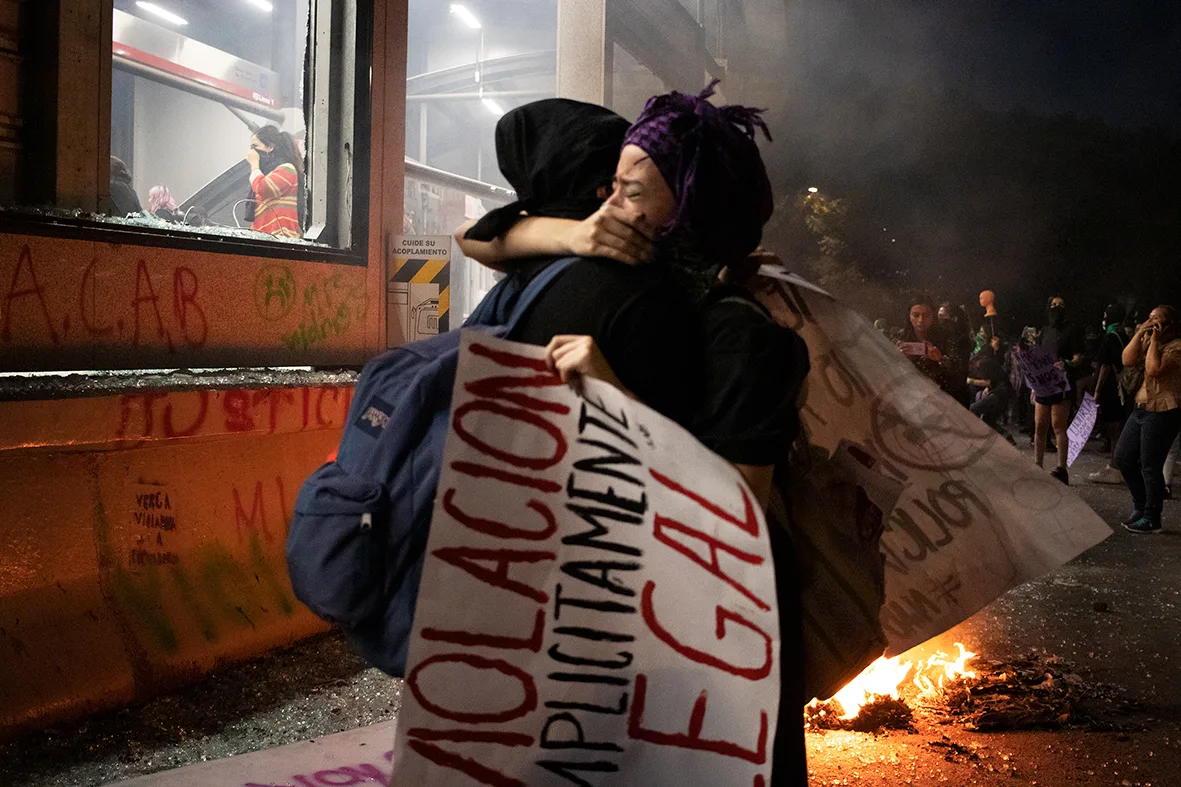
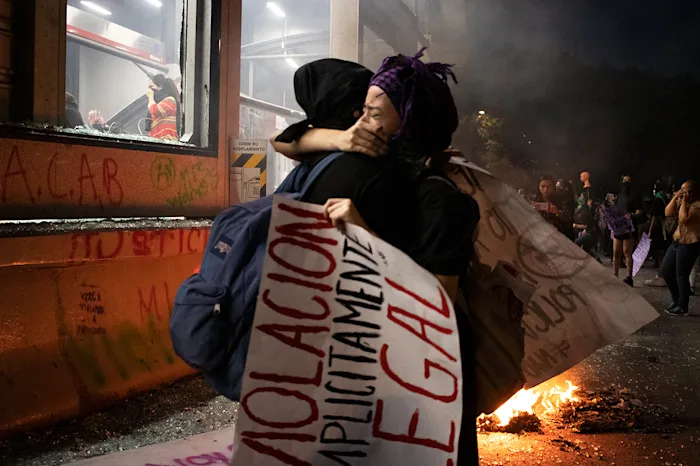
Almost all of us have at some point or another taken part in public events that upset us, where we perceive forms of interaction that anger us, that bore us, that exhaust, harm, or irritate us. While simultaneously assuming and rejecting our discontent, we have pushed ourselves, little by little, to challenge the patriarchal pact or, rather, to repudiate and transgress the limits that are imposed on us within it. That is part of the inheritance bequeathed to the current generation of women in struggle by older women, who poured themselves into earlier struggles. Understanding all of this isn’t easy; it can take time and effort to interpret what is going on within the two-way conflict that sustains the patriarchal pact, i.e., the negation of nosotras and the rivalry among men, all of which happens simultaneously. It isn’t easy to find the words to sift through and express our experiences of the world. In the middle of debates and conflicts, we watch as our creations are snatched away, our words and work trivialized. Other times we’re trapped and confused, forced by circumstances to choose exclusively between options generated from within the patriarchal pact. This produces enormous confusion, as it’s no trivial matter to clearly establish our desires or to maintain our composure when faced with each new aggression. Living within the patriarchal pact without challenging and dissolving it saps our time and energy. That is why the path of our centuries-long rebellion against the masculine-dominant patriarchal order has been so long and difficult. From the witch hunt on both sides of the Atlantic and the enslavement of Black bodies, especially those of women, to the negation of rights to various types of bodies following the French Revolution, the expropriation, banalization, silencing, and negation of our words and desires is overwhelming.
As a result, my focus in this letter will be on describing what I know best, from my own experience, concerning the difficulties of challenging the patriarchal pact from out of a desire to promote popular and communitarian struggle. In doing so, I often felt I did not have either the lexicon to name what I felt or the arguments to understand what was occurring, nor did I know how to either challenge it or extricate myself materially and symbolically from the position assigned to my body. It’s not my aim to write an “objective” treatise about the patriarchal pact and its horrendous consequences; I want merely to deepen the conversation that many of us are already having about the obstacles to subverting it, starting from the experience we each have of it. I feel an urgent need to share these words, since I know that it is sterile to try to advance processes of communitarian and popular transformation without understanding the traps into which we are likely to tumble along the way if we do not take responsibility for dismantling and dissolving the heavy weight of the patriarchal pact, or else, when we fail to grasp its many manifestations.
I have chosen to remain on the path of being among women that I intuitively and unexpectedly discovered for myself some years ago. This means sharing words and experiences in the first person in order to develop a broad understanding of the world, of ourselves, and of the patriarchal pact, which we also carry within us. This knowledge is useful, fertile, and necessary, although it has been denied and inhibited by decades of oppressive expropriation. In being among women, in the alliances and trust that we cultivate among ourselves time and again, despite the onslaught of doubts and threats from the modern, colonial, and patriarchal hierarchy of capital, we illuminate paths and possibilities for transforming individual and collective life with rekindled light.
There is a great deal of knowledge within us about how the multiple patriarchal pacts that we have endured and confronted throughout our singular life trajectories actually work. The trouble is that we often doubt what we know, which is still not considered “legitimate” knowledge. This is why, merely by naming the world with our own voices, or making an effort to do so, we have begun putting up a fight. We know that the world is not as it is described to us by the dominant gaze, yet it’s difficult for us to trust what our own bodies are telling us through the (often negative) emotions that come up in moments where there is no coherence between what’s said and what takes place. I write to you all as a call to trust ourselves: not because we are always right — not at all — but because choosing to deny what we still cannot express with clarity is a mistake. These words, sisters, are an attempt to increase our own self-confidence, to fully trust in the truth that we feel, and the pertinence of our judgments, and to call us to persevere in the construction of paths to express what we know and want.
Such an effort to smash the cages that enclose us — language is one of them, and a very hard one to break — by neutralizing the separations imposed upon us, by challenging and eluding the processes that expropriate our words and our creations, has become clearly visible, in a massive and radical way, through the rekindled struggles of interconnected feminisms. It is a generalized, massive effort that is at once collective and individual. Collective first and then individual, and not the other way around, as is commonly thought. It is as if many women across Latin America and other parts of the world have reached a critical mass of anger and discontent that surges up in our words and our actions, which aim to break down everything that traps us, to repudiate what exhausts us, not only “externally,” but also in “spaces of equality.” The fissures we have produced in the patriarchal pact, which sustains the capitalist and colonial exploitation of our energies and lives, have expanded and been radicalized, interrupting over and over the rigid framework of a world designed by the patriarchy of the wage and colonial hierarchy. The anger that we feel and express releases the force of a giant blowtorch that melts chains and collapses the bars that separate us. At this point, a difficult question arises: where are we going? How do we transform self-defense into a strategy? What do we need to build? These questions are of an urgent nature. Through this letter, I wish to nourish the collective deliberation that is already producing diverse responses.
Let’s circle back to two of the key characteristics of the patriarchal pact: that of its generalized plasticity which makes its features reappear over and over where we least expected them, including within ourselves; and its counterpart, the difficulty of trusting what we ourselves know and have learned. Hence the enormity of the challenge faced by the rekindled women’s movements and, in general, by todxs nosotrxs. We need to look at why it is so difficult to initiate the conversation between ourselves about how to create space for our desires, how to decide what to do with our energy, our resources and capacities, and we need to do so with a healthy dose of criticism (even if schematic) for what has been tried already.
The sex-gender hierarchy and the inequalities imposed by the reigning patriarchal-capitalist order of modernity is, among all the forms of hierarchy and inequality, the most difficult to fully come to terms with, to fully feel in one’s own body. The difficulty lies in the fact that the bonds of interdependence that enable the modern “contractual” fiction, which conceals hierarchies and hides much of the everyday work that must be done for any collective to exist, are either blatantly denied or ritualized in order to construct an abusively false notion of gendered complementarity. Within the contractual fiction organized in colonial and capitalist terms — a fiction that organizes family, labor, institutional, political, and other relationships — we are almost always placed in the middle of an unpleasant and cumbersome network of hierarchies and asymmetries. Hence that hateful feeling of discomfort we often perceive, which, furthermore, becomes one of the first topics that we talk about when we find ourselves “among women.” It turns out that when we finally share our everyday experiences of the world, we confirm that collectively and individually, we are included in the existing order only provided that we do not openly say what we think and, what is worse, that we often bend over backwards to act as if we did not notice all the things that don’t add up. Although this occurs differently for each of us, and there are other social distances and hierarchies that separate and segment us, by sharing this experience with each other we are able to illuminate a baseline of discomfort, malaise, and displeasure.
If we opt to express what we perceive and challenge what is imposed on us, we will find that each of us, and in the long run all of us, are excluded from the configuration of public institutions and systems. We become uncomfortable in those spaces. The immediate and systematic dilemma offered by the patriarchal pact is clear: included but silent, like the Tacita Muta; or excluded and scandalous like so many literary figures. In general, our lives are stuck making a difficult calculus between silence (uncomfortable for us) and outspoken scandal (uncomfortable for the prevailing order). Undertaking communitarian and popular transformation and struggle without systematically challenging the patriarchal pact traps us in confusing mechanisms of repetition when, I would insist (along with Muraro), we ought to be dismantling them.
Let’s see if we can orient ourselves in our current moment. While it may seem that there is no way out of the tripartite admixture of capitalist-colonial patriarchy, in its current format of a neoliberal extractivist political regime under financial hegemony, it has been nosotras who have revitalized and generalized our renewed capacity of struggle. By challenging all forms of sexist and patriarchal violence, we have opened a path that is placing the patriarchal pact into crisis at multiple levels. Along this trajectory, we have learned that violence has marked each of us in a different way, depending on race, age, class, and education. Thus, we are able to recognize differentiated wounds without ignoring anyone’s injuries. Our diverse struggles against all forms of violence, which are interconnected with struggles in defense of life, begin to provide us with a common ground.
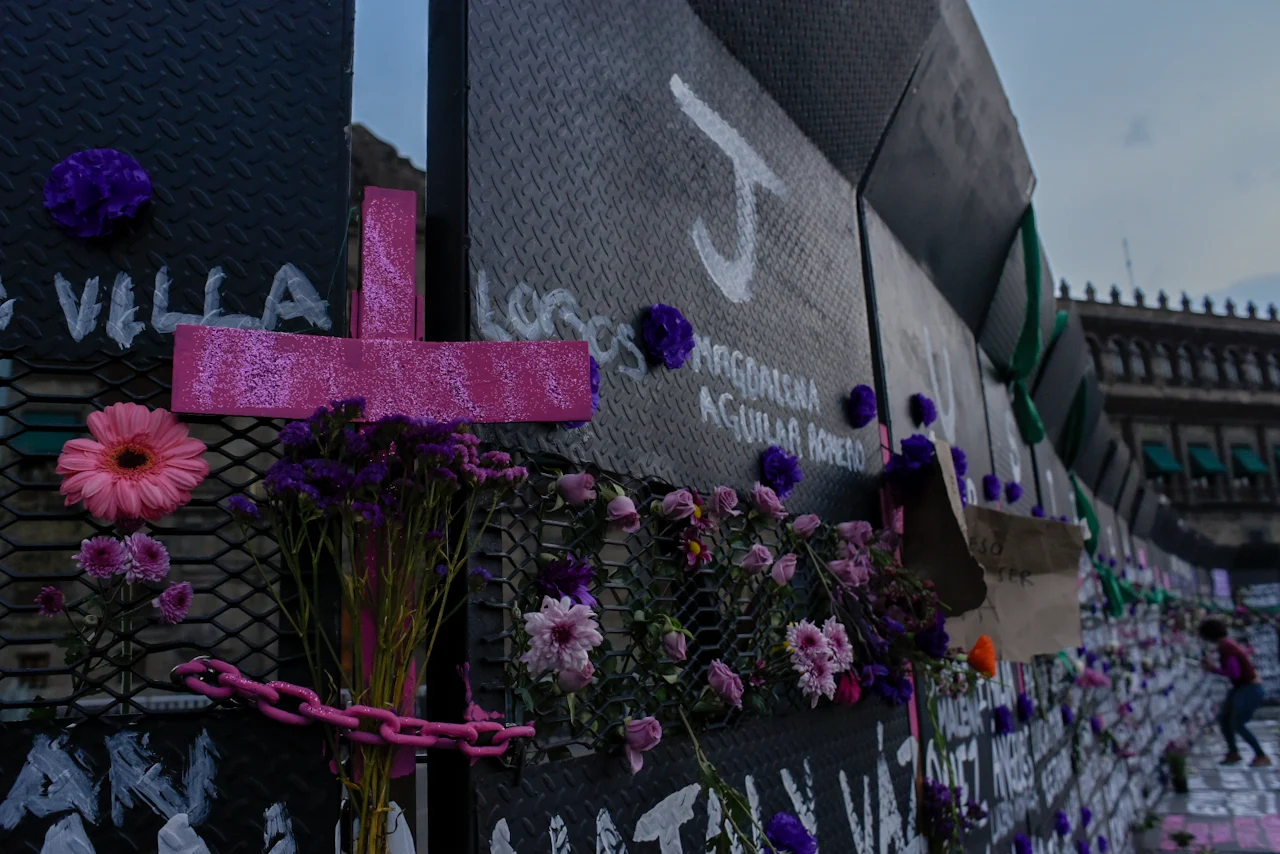
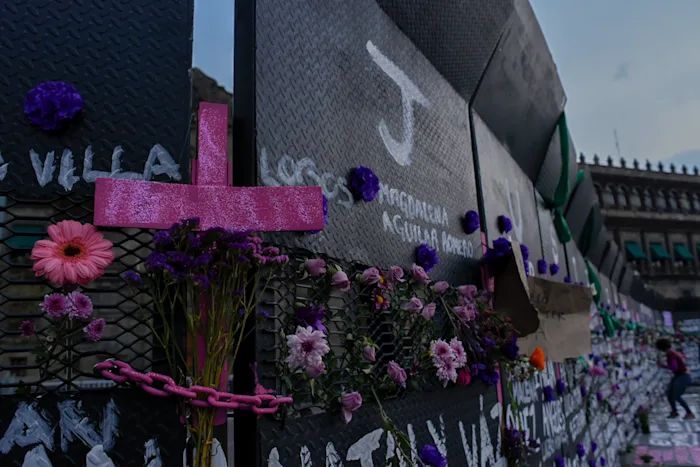
I noted above, following Almudena Hernando, that the bonds of interdependence that sustain the reproduction of collective life are either ritualized in ways that normalize and regulate hierarchies and differences, or else they are negated within a social framework that subordinates them to the abstraction of money, capital, and finance. Inherited rituals, particularly those related to forming intimate partner relationships, founding new families, and the transmission and control of property (e.g. land, etc.), are ways of marking and organizing men and women’s differentiated inclusion in the social world. The negation of the bonds of interdependence, and their nearly complete fetishized substitution by market relations, is how our subjugation is realized today. Over time, this only introduces further confusion, since masculine, enlightenment, and bourgeois political-philosophical reasoning has established the figure of the “individual” as the backbone of its symbolic repertoire and its argumentative canon. Thus the “individual” claims to be “neutral,” but, in reality, is masculine (and thus not feminine) and even worse, is fixed and identical, as in fascist fantasies. I will expand upon this in subsequent letters.
In such a context, in which bonds of interdependence are denied or hierarchically and asymmetrically organized, certain feminisms call on us to speak from a site of permanent discomfort, not to negotiate a more “adequate” or less “unjust” inclusion, but instead to dissolve the labyrinth of shackles and ties that prevents us from fully developing ourselves and reorganizing our collective and individual existence. However, there is an important semantic distinction here that is often overlooked: according to binary logic, the antonym of equality is inequality. The struggle against inequality, then, tends to collapse into a struggle for equality that is incapable of dealing with difference. When we set out to dismantle the binary framework that organizes the social world, we must simultaneously keep the struggle against inequality in view, without falling into a misleading “equalizing” form that was created within the patriarchal pact in order to hide its hierarchies and rigidness. Challenging inequality, and all the mechanisms that create it, while simultaneously celebrating differences by exploring them and collectively enriching ourselves through them, is a way to erode hierarchization not through equalization, but rather by “stirring up” (as Mujeres Creando4 puts it) the junctures between diverse bodies and the fluctuating balance of distances and hierarchies that distinguish us.
To clarify all of this, I will relate it to reflections I’ve had on my own lived experience, which might help explain what I mean. Thus, my intention is to name — initially, for myself — what has hindered and hidden the desires in play during different political efforts for inclusion and to nourish processes of communitarian and grassroots transformation, based on my own experience and drawing on my intuition. It is useful to understand and calmly analyze lived experience so as to be able to share it. It is also difficult, and that is why it has taken me so long to do so.
Women who are younger than me — those who are challenging the patriarchal-capitalist-colonial world today in the streets, schools, workshops, markets, and workplaces today, as well as in households (and there are many of them, as I comfortably exceed half a century of life), are much clearer about something that took a lot of work for my generation to accept: that it is impossible to construct spaces of equality without subverting absolutely everything and, further, without dissolving the mechanisms that reinforce the patriarchal pact, starting with ourselves. Despite the certainty that nourishes and feeds me today, I trust that the knowledge that I can share will still be fruitful for those who are younger. The experience of having lived through other situations, of having seen how expectations went up in smoke and having little time to think about it all, might make it possible to reflect part of the path that we, those who are older, have had to go down. Under no circumstances do I want to — or could I! — decide what steps younger women will go through, although the desire to accompany them and to share what I have learned in my vital assemblage of experiments and trajectories, does emerge. I seek to contribute to each person’s organization of their experience by narrating how I have, with great difficulty, gone about organizing my own.
It is worth going further in examining this problem: when we act “naively,” as if we did not know that spaces of equality do not exist, the patriarchal pact presents itself to us in all its ferocity, often ambushing and disarming us. It can paralyze us and submerge us in a sea of unpleasant sensations. Because of that, it is important to record and account for what we already know.
In my generation, the first place where some of us thought that a space of parity might exist was within the heterosexual couple, after earlier struggles had opened the way for the more or less independent management — although still not fully autonomous — of our sexuality and certain other life choices. From there, some of us sought to rebuild bonds of interdependence that would be balanced and pleasurable, in order to give ourselves the strength to subvert other spheres of the public world. In Desandar el laberinto, I discuss the chaotic entanglement of sex/gender relationships within the family and the heterosexual household, seeking clues to unravel some of the most painful confusions. However, in my own experience,I experienced how intimate and vital efforts to subvert and challenge all types of relations of power and exploitation in the public world were undermined and destabilized in the private sphere. The most basic bond of interdependence in the first part of my adult life became, at some point, a very heavy burden. I untied those bonds. Even so, it has been terribly difficult for me to realize and admit that there are no (mixed) spaces of equality anywhere. It is harsh and tiring to strive to transform the everyday mixed spaces in which we participate, without first forcing them into crisis.
In multiple discussions with many sisters, friends, and allies, across very different situations, I have noticed at least two foundational elements that are helpful in understanding this situation. On the one hand, it has been fundamental to understand how capitalist modernity radically negates the world of the material and symbolic reproduction of social life. That negation, or continuous disavowal, can take on multiple faces: from the negation of the labor of the “production of life in procreation,” which positions it as a mere “natural process” disconnected from its central role in the production of commodities and capital, to the enormous amount of emotional and material labor necessary to sustain human life daily, especially in the midst of the predominance of commodity relations, the drive to hyper-exploitation, generalized dispossession, and the reestablishment of all sorts of colonial hierarchies. The range of what is negated is immense: from ignoring processes of production and care necessary to sustain human and non-human life as a whole, to the repeated negation of daily acts of creation, and the importance of affective and productive bonds. Time and again, there is a vast and generalized negation of the human capacity to create and cultivate a broad range of connections and relationships that sustain existence in struggle: within, against, and beyond colonial capitalism and its continuous expropriations.
Furthermore, through centuries of Enlightenment modernity, almost everything that came before was collapsed into the absence of words and captured by the art of a certain type of enunciation consecrated as legitimate, that prescribes at the same time as it legitimates. This ranges from women’s progeny — who receive their father’s last name (at his will) — to the phratry5 that dictates the law while assuming no responsibility for the impacts its statements have. Patriarchal predominance is founded on the radical negation or the disembodied expropriation of the everyday and exceptional process of reproduction, which perfectly aligned with the regime of valorization and the establishment of colonial hierarchies. Both rigidly restrain — and deny — the diverse and arduous processes of creation undertaken by women. It is here that colonial capitalism and patriarchy come together and are grafted onto one another, giving rise to the patriarchy of the wage, which as Silvia Federici explains, is currently in crisis.
On the other hand, it has been both challenging and important for me the extreme difficulties I faced in expressing my desires, organizing them, and giving them space. I have long felt immense unease with this condition. The full weight of centuries of domination can often be immediately felt in contexts where we attempt to organize everyday life, both in exceptional collective situations as well as in our personal lives. Time and again, it feels that the result of our own actions do not conform to what we imagined, that our creations are deformed as soon as they leave our hands. We feel new waves of uneasiness, even fear, and profound incomprehension of the enormous difficulties that we face in deploying our deepest intentions. This happens over and over, to the point of fatigue and exhaustion. Hence the urgent need to understand what befalls our creations, given that it feels like, over the long run, our own energies tend to become an foreign property expropriated from us over and over again.
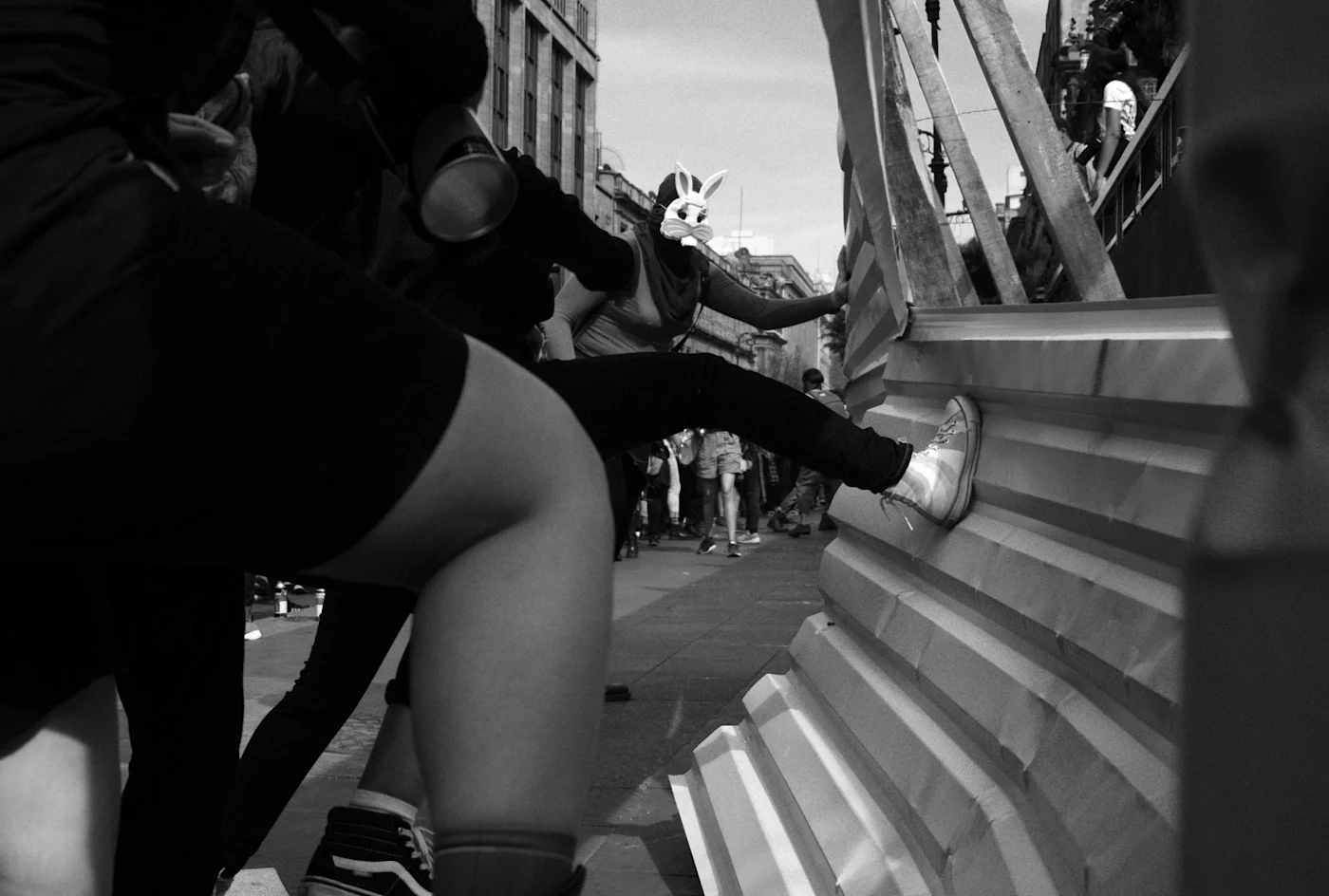
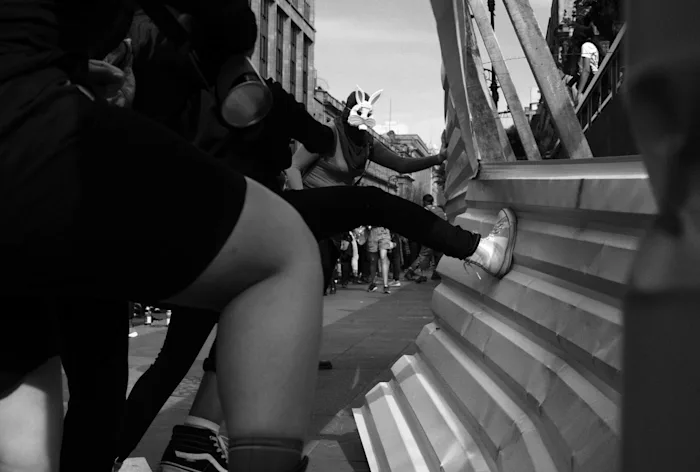
Lately, we have seen the appearance of a growing mass of furious and desirous women finding each other, who display no interest in compromising around the limits generally imposed on us. Where are we going? What creations do we need to prompt, push, or develop? These questions are the most difficult, since they highlight the need to dissolve the bonds that tie us to the symbolic order — which has existed for centuries — in order to be able to direct our psychic energy, vital force, and material wealth toward reconstructing the world we inhabit. Initiating a gigantic act of self-defense will serve as the starting point for our current autonomous creation. As for where we will go from there, it opens up a vast and fertile terrain for creative and provocative discussions.
A starting point
How can a fish explain the water it inhabits? How can a woman describe the air she breathes? How can we expose different edges of this age-old problem? This is a difficult issue for me. Perhaps that is why I took so long to do so: it’s been more than eight years since I first felt the strong desire to write about it. I could not find a theoretical frame, or a point of departure to present my arguments.6 First, it was Mujeres Creando, and later the feminism of difference of the Diotima philosophical community7,and finally, Silvia Federici, who gave me the words and initial help I needed. A more or less recent, and very unpleasant event prompted me to immediately contextualize the problem in order to reflect on it in a concrete way. I will take it as a point of departure since I think that it is also useful, as a feminist research technique, to narrate a difficult and incomprehensible event in which that which is negated and hidden is condensed. Understanding such an event shines light on the patriarchal pact, and how it works against us, because it brings it into sharp relief. If we can understand the patriarchal pact as it appears in a small, personal situation, it gives us the capacity to understand its multiple repetitions at different scales.
It was a Monday in June 2016, and elementary school teachers in Puebla (as well as in many other parts of Mexico) were out in the streets protesting the so-called “education reform.” It hadn’t been long since the massacre of teachers in Nochixtlán, Oaxaca.8 We, professors in the Graduate Program in Sociology in the Autonomous University of Puebla (where I work in a waged capacity) had an important meeting that day: we9 were selecting the new generation of doctoral students. It is always complicated to talk about this because it appears like a set of “betrayals.” It has always been this way: they attack us, and we are supposed to remain silent about their aggression. Now that we have become cognizant of it, we no longer comply. The case of the abused woman in the heterosexual couple is familiar to many; yet the problem is that the same thing is expected to occur in the rest of society, in other spaces that are supposedly egalitarian: the same loyalty is expected of us, that same silence that guarantees impunity, that makes aggression invisible. To not go into too much detail, I will present a summary of what happened that day, during a formal selection procedure whose requirements had been clearly met, and in which our stake in the matter had been made clear. The case concerns a compañera who had already encountered strong friction among those who participate in the patriarchal pact underlying this apparently democratic and leftist space for the production of ideas and the education of younger generations. Mid-meeting, a new criteria for selection and exclusion was suddenly introduced. We expressed surprise, and argued against the rule’s incorporation into the process. The meeting becomes increasingly polarized: us — and only us — on one side, and everyone else, including a female colleague, on the other. How did they manage to come together so quickly? Are they really all in agreement? Here’s the trick: they are not in agreement about the point in question; they are in agreement that they must contain us. We cannot challenge their stability, their capacity to get the “last word.” Astonishment: this was a collective exercise designed to discipline us! Then further astonishment when an apparently crazy idea arises from our bones: this serves the same function as the disciplinary rape discussed by Rita Segato! Such a recognition is by no means self-evident; in fact, the idea seems so repugnant and preposterous to us that our first instinct is to deny what is happening. We do not accept such delusional facts, and instead cling to the belief that we inhabit a space of equality. One of our bodies reacts in the form of vomit: this is really happening, something very serious is happening. It’s hard to make the leap from facts to their meaning, because it is hard to admit that a foundation of modern capitalist patriarchal order is crumbling: the illusion of equality, the fantasy of parity.
On a gray June afternoon, the veil covering the patriarchal pact was torn off, and the whole imaginary revealed to be one big lie. It was our pushing that made it visible, although it was so horrible to behold that accepting what we saw wasn’t easy. The image that we had had of some of our colleagues up until a moment prior suddenly implodes upon the realization that they are all acting like members of a brotherhood [fratria]. This fratria now sought to punish and discipline women who had the audacity to coalesce, which, in their view, directly challenged their rules and authority. Everything was so trivial, so immediate, and happened so fast that it was hard to accept it. It is so “neanderthal” as to be repulsive. The worst part: what transpired immediately felt incomprehensible. The only clear thing was the result: the virulent imposition of a decision in which there was no willingness to listen to our arguments and in which we could not intervene. We protested. We wrote letters and complaints. Of course, they had no effect. It was as if our words lost all their value the second they left our lips. And there was a well-known trick for doing so: misrepresenting what we say, claiming that we are saying something we’re not, even if we have expressed it in writing and it is possible to compare both versions. But nobody was interested in doing that. Something else was at stake in the dispute: disciplining us, and reestablishing their monopoly over decision-making.
It’s clear what is at stake: they perceive us as a threat, and will not allow us to work with a woman who had previously placed limits on them. That they will not support us is nothing new, it’s how they have related to us since first we came together as a team. Lack of support, however, is only the first moment in the type of relationship that they establish with us. Later comes the aggression: underhanded and indirect at times, open and bellicose this time, and also at subsequent moments.
It is not a matter of someone within the brotherhood having a problematic and aggressive “personality.” Even if that might be the case, the real issue lies elsewhere. It concerns the effort to put us “in our place,” the subjugated place to which reigning masculinity consigns us. The place that serves their agreements and objectives. Our own, increasingly autonomous, place, and voice? No! That space and that voice are not allowed! We must continue to struggle, and to create it.
In mixed spaces, and this is very hard to understand, there will not be recognition of — and much less support for — an autonomous place for us, for any of us, nor will our voices be recognized when we share our thoughts and desires. From the patriarchal perspective, that autonomous place does not exist, and if women make the effort to build it, men — and some women — will work to undermine and sink it. They do not assign us a place of equality: we exist for them, or risk being erased. It is that simple. However, in the last five years, we have been massively abandoning our pre-assigned positions. Many of us are migrating away from that sterile and intolerable site in different ways, with varying strategies, which are sometimes even contradictory. Little by little we are recognizing one another, despite difficulties squaring our differences.
What happens within the patriarchal pact is, in the long run, unpredictable. However, there are some things that happen over and over again that we are fully aware of: the surveillance of coalitions among us in order to control our agreements; or, when we do manage to keep our projects going by the skin of our teeth, they are consciously (or unconsciously) obstructed, in every imaginable way, whether via underhanded or open aggression. For our part, this generates anger, a lot of anger. Pure rage, even…until we finally manage to understand what is happening. The forms of interaction are unsettling, in part given that the types of aggression each of us assembled experiences tends to vary. They will establish graduated levels of recognition toward us, in an effort to break up the alliances that we have achieved, exercising a great degree of prudence if the person challenging their pact enjoys a degree of material autonomy. Deep down, they deploy systematic harassment against any form of political autonomy, and absolutely no symbolic autonomy is allowed.
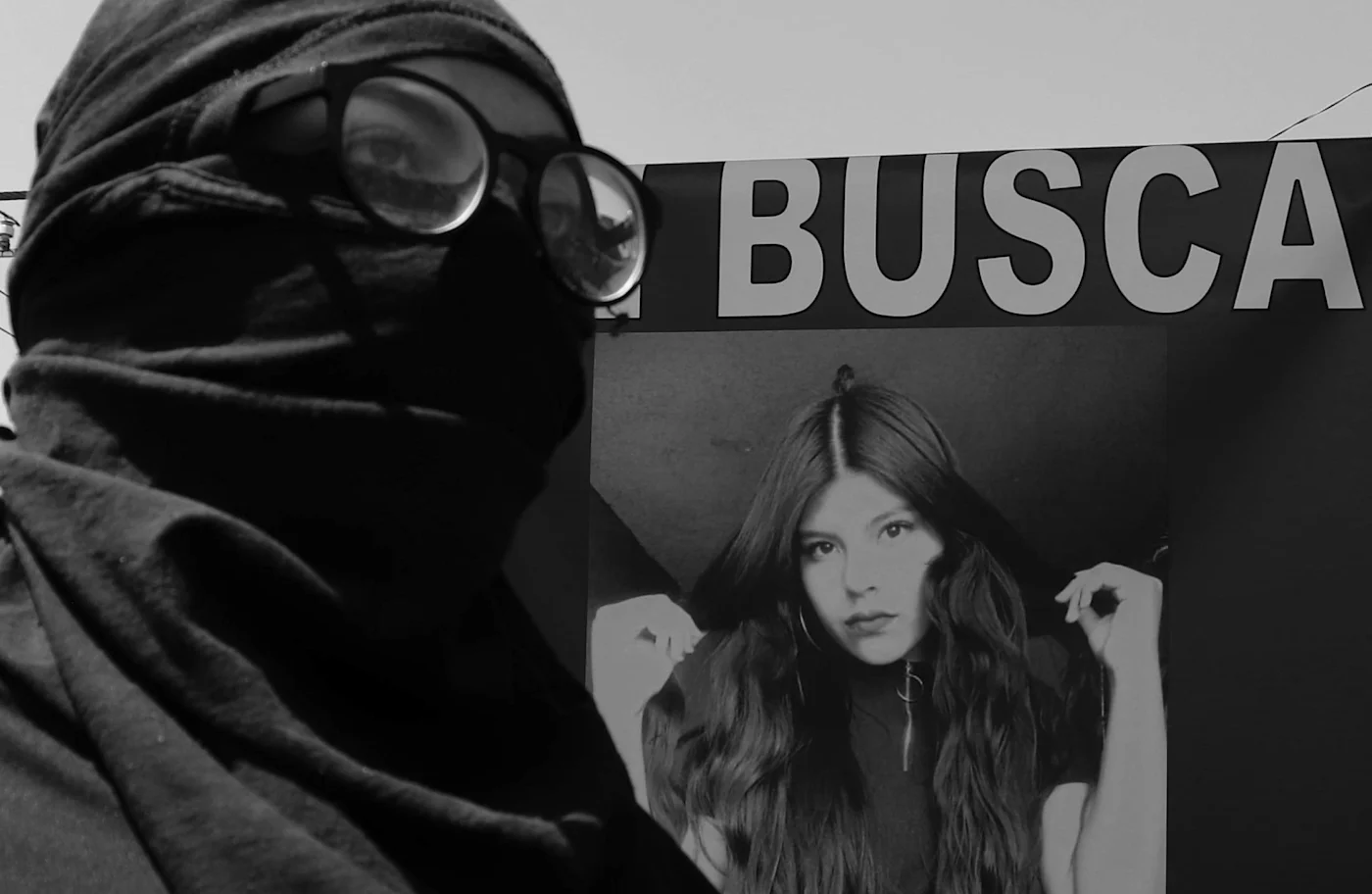

In their imaginary — and this is how I overwhelmingly felt it with my whole body that afternoon — we are, at most, a “supplement” to themselves. How dare we try and go further? How dare we believe that we can do something else that does not fit into what they have already designed? Who do we think we are? Their norms have worked for decades or even centuries, and well…sure, there are problems, but ultimately what do we expect, if we disregard their wise council? Isn’t this all foreseeable? Their aggression is justified. We are the ones who do not understand the rules.
They are wrong: we do understand the rules. We are defying them, altering them, as little by little we consolidate our feminine, insolent and fertile, creative and disruptive, force. Thus the problem is renewed: self-defense against the aggression to which we are subjected is our most important task. At first, we think this need to defend ourselves will drain us of energy, but little by little we realize the opposite is true: when we defend ourselves, we recover our own vital energy and the joy that goes along with it. Problems become challenges, and challenges spark creativity. This we grew to understand. The experience that day provided me with a starting point for this text. I knew that this was happening and I did not believe that I knew, perhaps I had forgotten it in order to not remember the pain and confusion that color many of these experiences.
A place for us
The place assigned to the feminine and the feminized within the capitalist and colonial patriarchal pact is detestable. It shapes diverse forms of the “feminine” as well as varied “masculinities.” We do not want to be there, nor will we remain there. We wish to subvert that geometry, and many, many women, especially the youngest, are making a major effort to do so. Little by little we are escaping the place where we have been placed for at least five centuries and, to do so, we have traced different routes.
One of those routes initially took the name of “feminism”: a path undertaken by women, primarily those from the ruling class, who sought to gain the same privileges of men from their class. At first, during turbulent moments when bourgeois political power was being consolidated, that was the path of equality feminism: the right to vote and be voted for (when voters still had to be property owners), and the right to inherit and freely manage their own property in the midst of an ocean of radical dispossession. This path, which was tread throughout the 20th century, has reached a limit. This is especially true given that, in recent decades, equality feminism has once again become linked to liberal political forms whose internal organization is based on a supposedly “neutral” subject, devaluing sexuality as a mere “preference” to be administered and refusing to recognize sustaining life as a fundamental part of society. This subject is one who is not responsible for the work of reproduction, who thinks that their life can be guaranteed solely through market relations, and who makes political decisions exclusively through representative forms: the citizen, the consumer, the voter. It is true that this path has contributed to dismantling some of the most hateful earlier restrictions, both for working class men and for some women. But it has come at an enormous cost, namely, turning us into a disposable ultra-exploitable labor force, that is, into “citizens.” The process has been long and hard-fought, made up of struggles that, in their oldest and most general meaning, have defended land, water, means of existence, wages, rights, and also political capacities for self-governance. Despite all this, a disastrous figure has been imposed on human interdependence and between the human and the non-human: the tripartite figure of capitalist-colonial-patriarchy in its contemporary version of neoliberal war. That is how we are assembled today. In the midst of this patriarchal amalgam of colonial-capitalism, although always beyond and against it, women have waged vigorous struggles from the left. Recognizing themselves both as women and as part of the working class, our feminist grandmothers were determined to deprivatize the rules of marriage and the family, creatively seeking to place guaranteeing the reproduction of life at the center of political work. Other voices have energetically, and almost always alone, disputed the partiality of the dominant masculine vision: Rosa Luxemburg is emblematic of this effort, as is Silvia Federici, along with many others. On the one hand, over the last fifty years, renewed paths have opened up from other registers that share an essential element: women workers are not a sector “of the class” but rather part of a negated historical experience that is gaining expressive force.
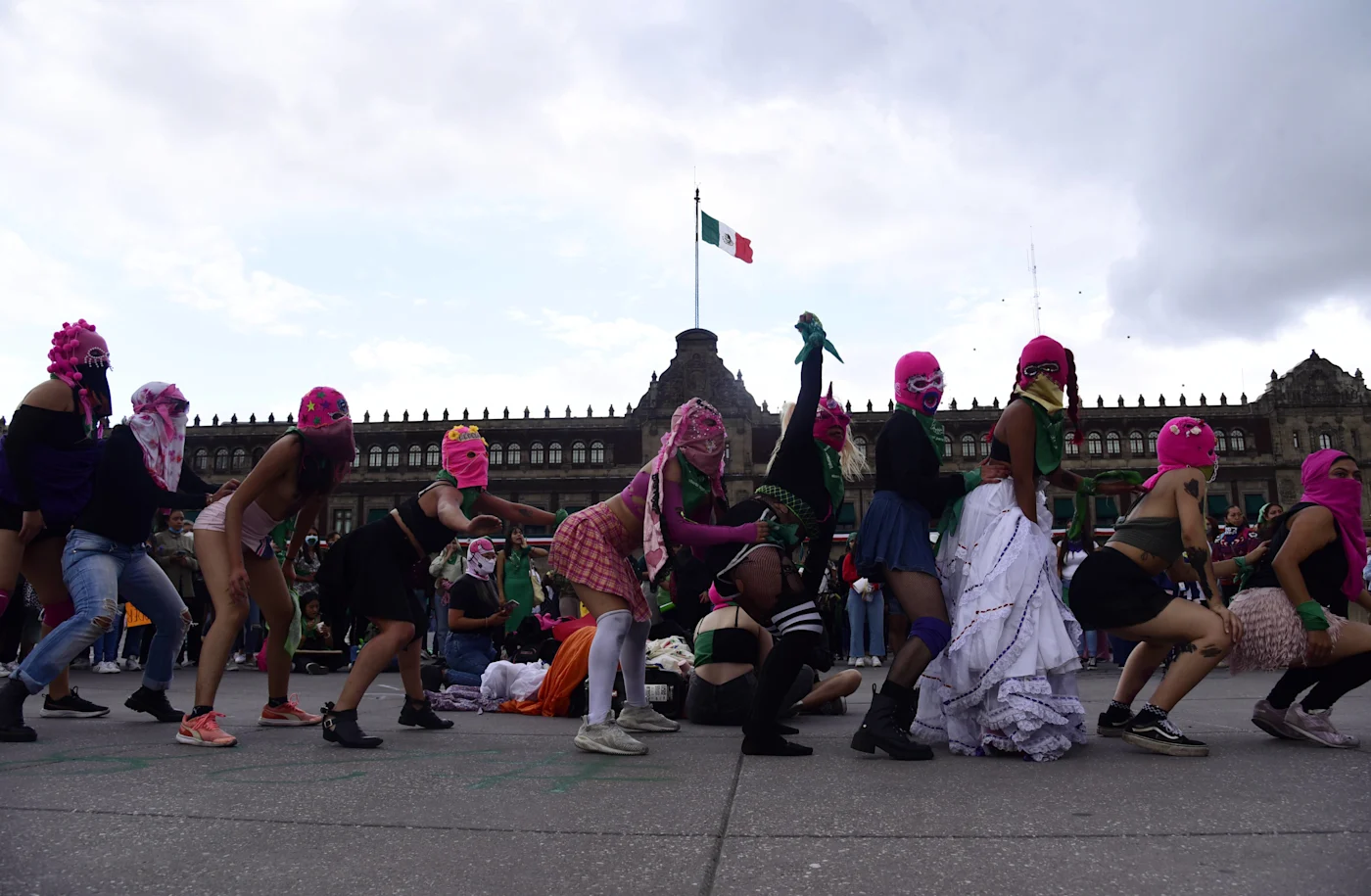
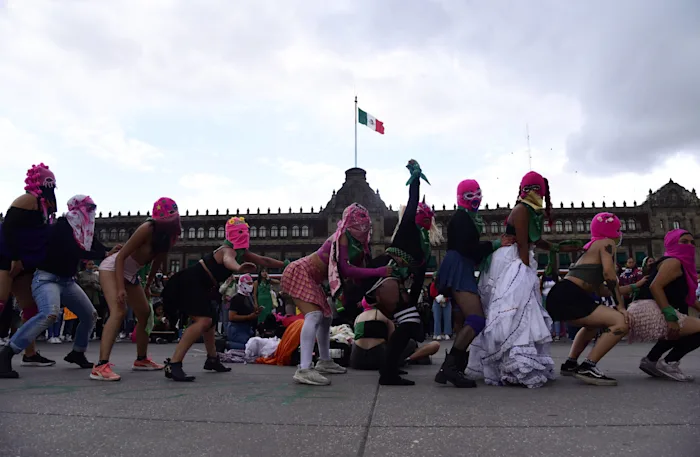
With this, the feminism of difference shares some key threads: it recognizes and identifies with sexual difference, places women’s bodies at their center, and thinks about how to transform the world starting from there. Decolonial, communitarian, and Indigenous feminisms bring together the key elements of the differentiated struggle against exploitation with the struggle against colonial, capitalist, and liberal dispossession and destruction. Lesbian feminisms do not only include the perspective of sexual difference — as this issue is expressed in the register of “rights” — but also critique the heterosexual and heteronormative regime that imposes a single path as the only acceptable, legal and legitimate, one for organizing the everyday reproduction of social life and the circulation of erotic energy. There is an enormous flow of ideas and words that inspires and nourishes us. We have history. There is a powerful history of our innumerable struggles. A history that is not symmetrical with the history of leftist struggles led by many men and some women. Our history is different.
In the midst of this effervescence, which has been activated again with incredible force, my position is the following: I trace experiences of struggle in the first person, recognizing — in line with the feminism of difference — that there is a fundamental difference in how we experience the world, and in the paths that we take to try to subvert the relations of exploitation, oppression, and dispossession in which we are trapped, based on whether we inhabit a woman’s or feminized body or a male body. Additionally, I adhere to anticapitalist and anticolonial autonomous, popular, and communitarian feminisms, focusing my vision on the relations of interdependence necessary to sustain life, in its malleability and, at the same time, in its durability. In other words, I recognize that it is only through generating and cultivating satisfying, and not exploitative or oppressive, relations of interdependence and care that we can guarantee pleasurable and creative life paths, open to all possibilities without being limited. For me, recognizing — with my body — our relations of interdependence means knowing, and taking responsibility for learning about, how to produce and reproduce the commons. Finally, I recognize the everyday reproduction of life as a structuring axis of any possible social transformation, and I share the critique of the heterosexual and heteronormative regime that establishes the heterosexual couple and the legal family as the organizing model of the broad world of reproduction and daily life.
From this position, I continue to practice and illuminate an “antipatriarchal politics for the commons.” That is, my political practice — that I am reflecting on here — does not lose sight of the fact that I inhabit a woman’s body, it recognizes bonds of interdependence, and, therefore, the production of the commons as fundamental axes of reasoning regarding how to subvert the capitalist, colonial, and heterosexist regime that places marriage and the family — even if “egalitarian” — as the foundations of the organization of daily life, enabling exploitation through waged labor and the multiple forms of dispossession of individual and collective creations. It is from that position that I seek to speak. I have felt, throughout the last two decades, that I need another language, other coordinates to orient myself to the world and to my own desires. By writing to you all, I am providing myself with those coordinates.
With much love,
—Raquel
P.S. Briefly, a few quick lines on something that is not a problem but ends up being one: our strength today! Being strong should not be a problem for us, but it is as long as our power is deployed to dismantle spheres of the patriarchal pact that are rebuilt in unprecedented ways. The problem lies in the brutal and reactive way in which many are determined to either contain our disruptive force that we deploy or to reappropriate it, that is, to harness it for their own purposes. While I will reflect on this more calmly in the following letters, I’d like to quickly outline a few useful things that I have learned in all these years:
a) While we know and can affirm that we want to subvert and change life as a whole, it is complicated to connect explicit objectives and goals, and especially, to do so in a synthetic way. The strategic constellations of feminist struggles, as they unfold, break any symmetry with the patriarchal features inherited from canonical leftist thought, which is almost always organized in terms of “end goals” and exclusionary binaries. However, it is very difficult to find the resonances that allow us to recognize each other as diverse women in the midst of our deployed power. A mirage appears that is a trap: the sense that something is missing from our struggles, and in what we are affirming.
This mirage operates by projecting the reflection of the patriarchal/capitalist order onto us: as long as we are the ones who, in varied and polymorphous ways, take responsibility for sustaining life, we know that it is fruitful to stop draining our energy and resources in ways that are imposed on us everyday. We are committed to this. When such activities are given meaning from within the patriarchal pact, they immediately seek to instrumentalize the regenerated force, disrupting its purpose. Some members of the pact — mostly men, but sometimes also women — will come to “complete us,” or “correct us,” by pointing out what it is that we are lacking. It is important not to trust them, not to believe them. It is crucial to keep our guard up.
b) The second thing is the importance of not getting emotionally tied up with our detractors and antagonists, because doing so fills us with anger and hate, two of the most destructive emotions that only drain and confuse us. Our self-defense, then, is a vital issue. It is only in this way that we can achieve that which we set out to do.
Translated by Dawn Marie Paley and Liz Mason-Deese
Images: Maria Ruiz
Notes
1. To distinguish within the weavings of interdependence that we are the quality of connections in which we are inserted, I will emply two different words: to assemble and to connect. To assemble will primarily be used to allude to the places that are heteronormatively assigned to each person, that precede us: race, class, nationality or place of origin, age, etc. Connecting, on the other hand, alludes to the connections that we are capable of producing and regulating beyond – and against – how we are assembled in the network of interdependence that makes up the world. ↰
2. In Spanish, Nosotras is the feminine first person plural subject pronoun. Also used in the letter is the gender neutral/gender queer formulation todxs nosotrxs, “all of us.” This usage emphasizes that Raquel sees her feminist “us” as an inclusive structural category that includes gender dissidents, clearly differentiating herself from a strain of reactionary and essentializing trans-exclusionary feminism. —Trans. ↰
3. I begin with violence in the public space because that which transpires in the private space is often so blatant [cruda] that the violence that occurs in the public space winds up being relativized.↰
4. Mujeres Creando is an influential Bolivian anarcha-feminist collective founded in 1992, whose members include María Galindo and Julieta Paredes. —Trans. ↰
5. Brotherhood of citizens in ancient Greece. For a discussion of the phatry and the patriarchal order, see Friedrich Engels’ Origins of the Family, Private Property and the State. —Trans.↰
6. In the following letter, I will describe how I “forgot” my greatest moments of strength and pleasure because I was not able to integrate their meaning into my life trajectory.↰
7. The Diotoma philosophical community is a community of feminist philosophers from inside and beyond the academy founded in 1983 at the University of Verona. In addition to other women’s movements, they drew particular inspiration from Luce Irigaray’s anti-essentialist theories of difference and the practical experiments of the Milan Women’s Bookshop collective. —Trans.↰
8. On June 19th 2016, the Mexican Federal police opened fire on students and teachers in Nochixtlán Oaxaca blockading a road in protest of neoliberal education reforms, killing six and wounding 108. —Trans.↰
9. The “we” that I allude to here is made up of Mina Navarro, Lucia Linsalata, and myself, who are part of the Postgraduate Program in Sociology and maintain a specific research area called “Communitarian Fabrics and Forms of the Political.” It is there, and with them, where I work as a professor. ↰